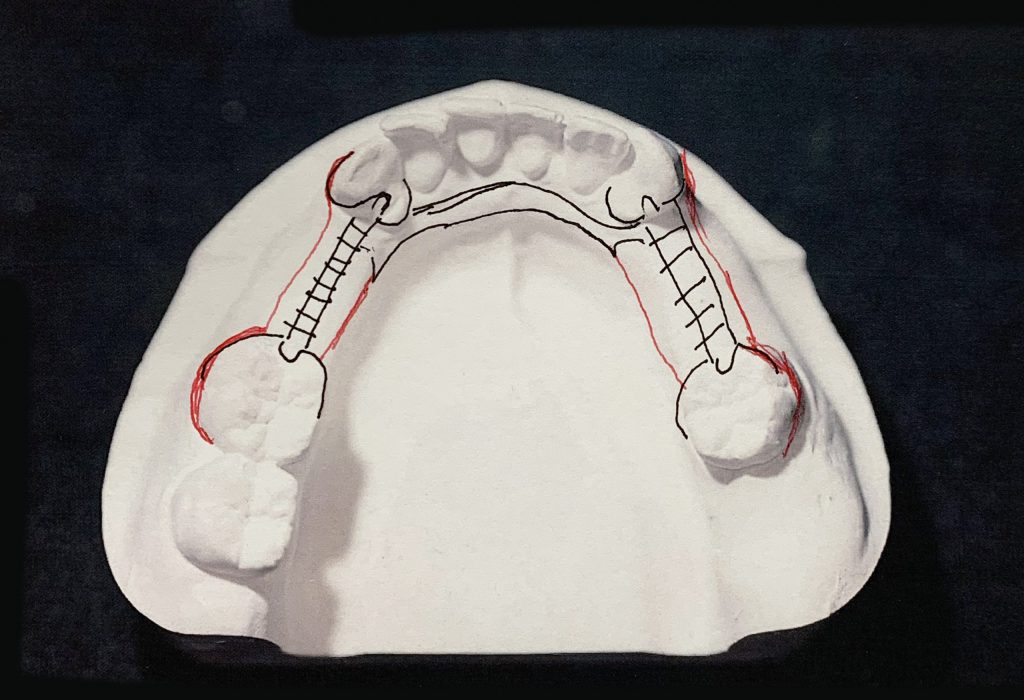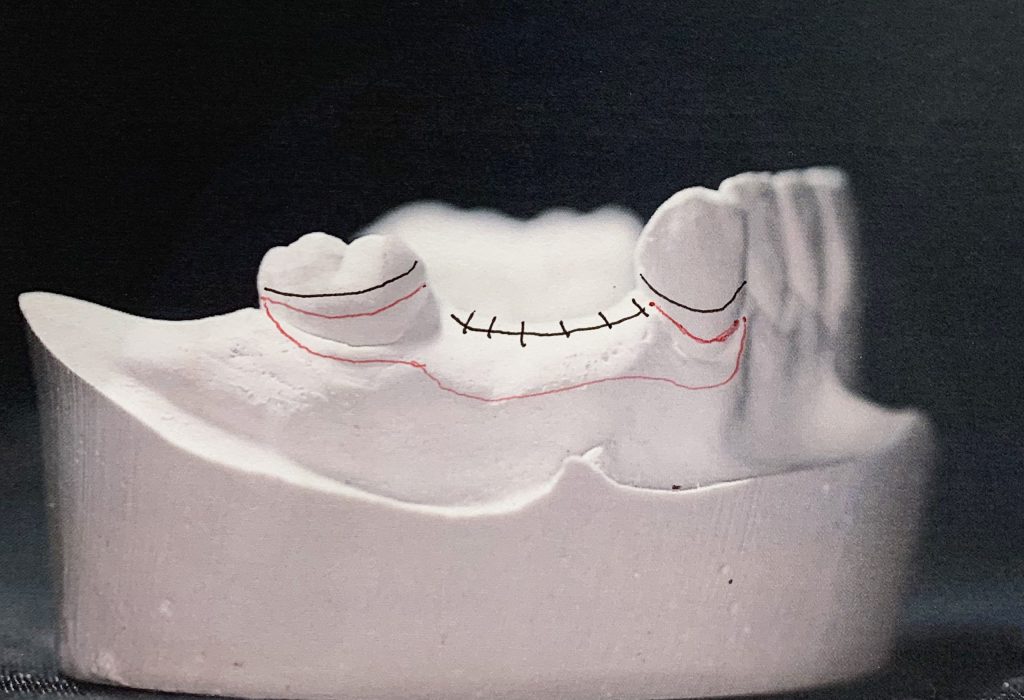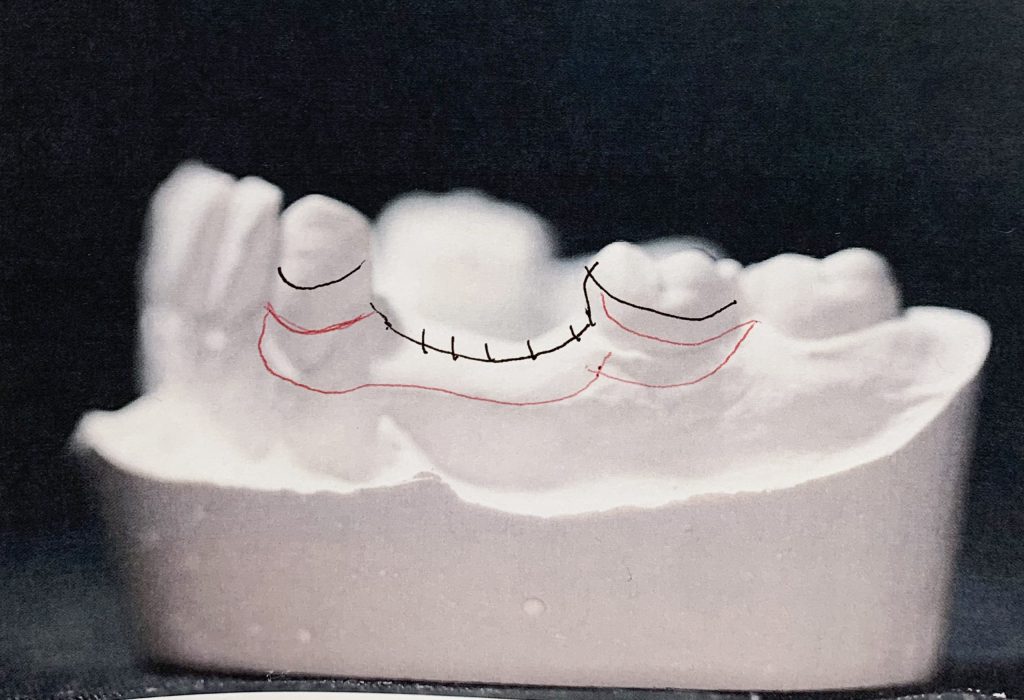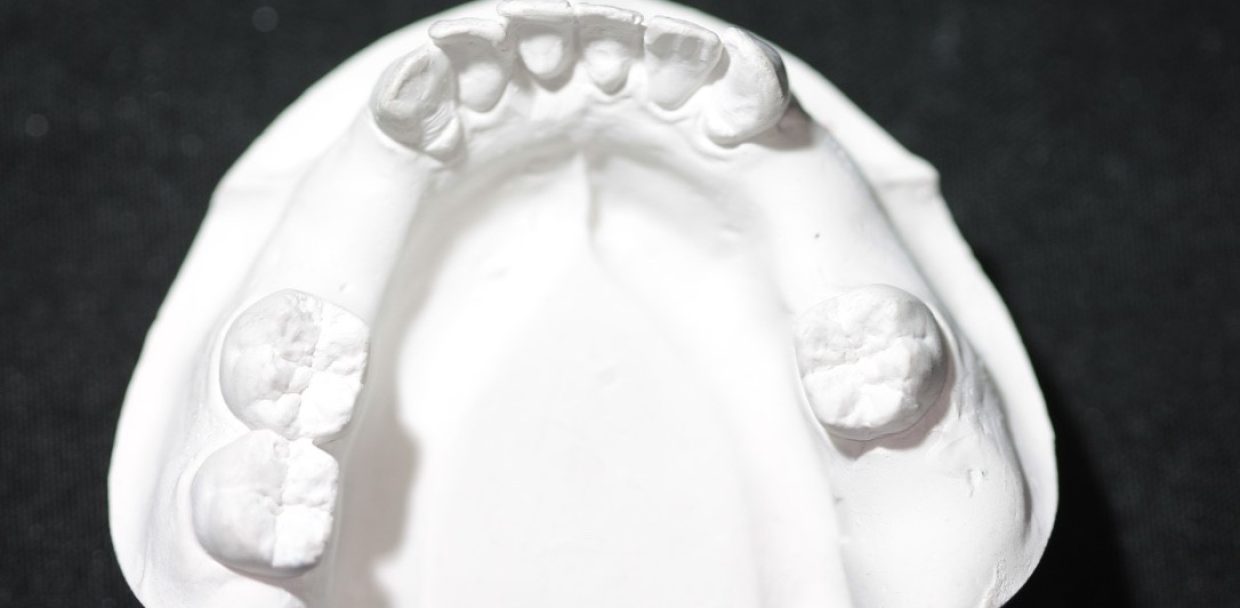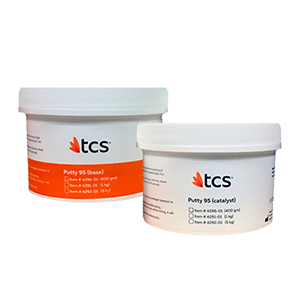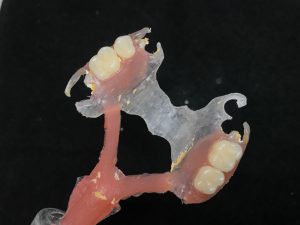Following the Kennedy method, we will evaluate a case to determine the type of partial denture, design, and functionality that best suits the case.
General
Significant displacement differences should be considered when designing a partial denture that is supported by teeth and soft tissue. E.g. Kennedy Class I situations – Distal extension cases:
- Healthy teeth – displaced ~ 0.2 mm
- Soft tissue – displaced ~ 1.0 mm or more
To prevent displacement of partials, away from oral tissue and rotational movements, retention is obtained by direct and indirect retainers. Optimum support of distal extension denture base is necessary as well as the use of flexible direct retention to prevent torquing forces transmitted to the abutment teeth. Additionally, the equitable distribution of occlusal forces preserves the remaining teeth.
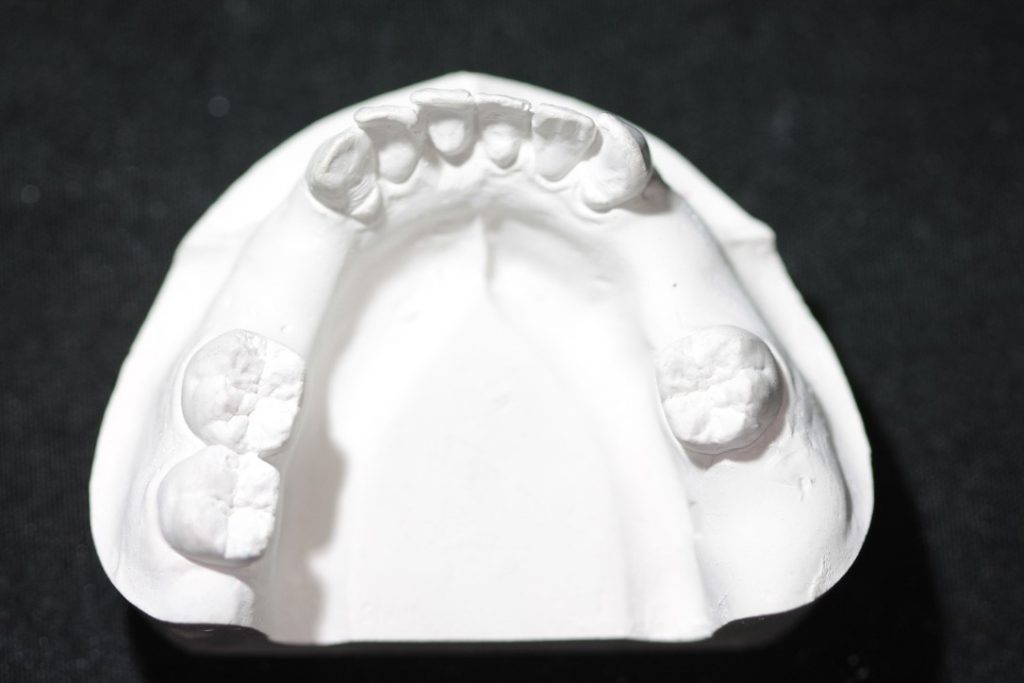
This case serves as an example of a Kennedy Class III
Kennedy Class III is supported by abutment only (teeth or implants) anterior and posterior to the edentulous space. This class does not tend to move or rotate in function. It is considered the most stable. Denture bases do not rotate or lift away if there are enough remaining teeth to place four retainers in a quadrilateral configuration.
- Compensation of rotational forces is NOT needed.
- Residual ridges are used for support in long-span cases only.
- Direct Retention is needed to prevent dislodgement of the denture when functioning.
- Any clasp could be designed – there are no restrictions.
Prescription options for case #3
TCS Flexible Partial – This is an ideal case for a TCS flexible partial because all the abutments are present and there is no issue with displacement.
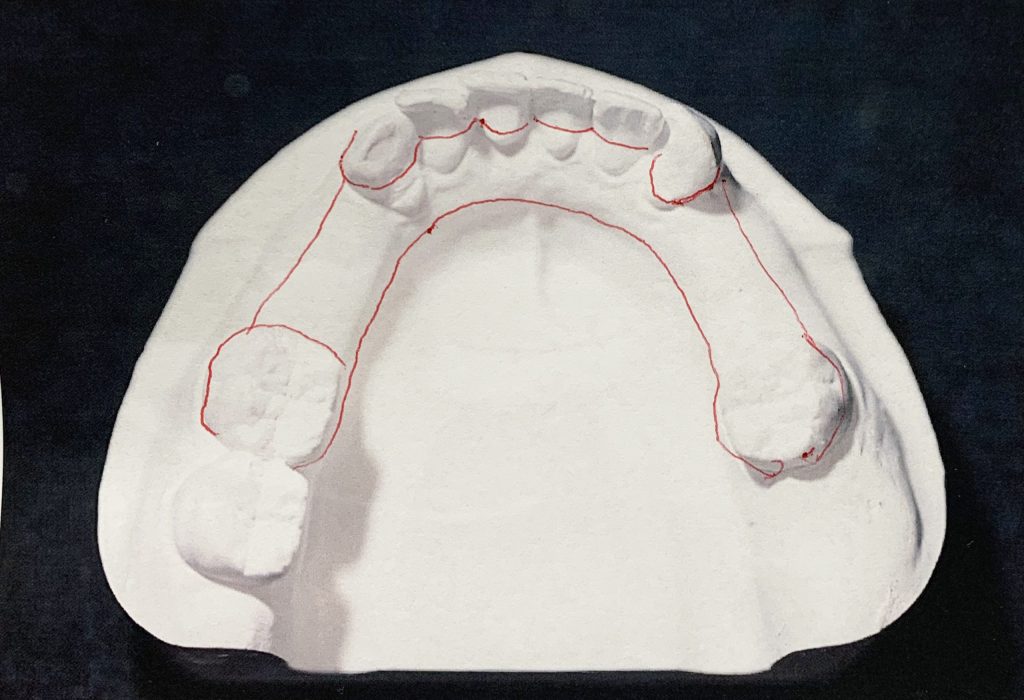
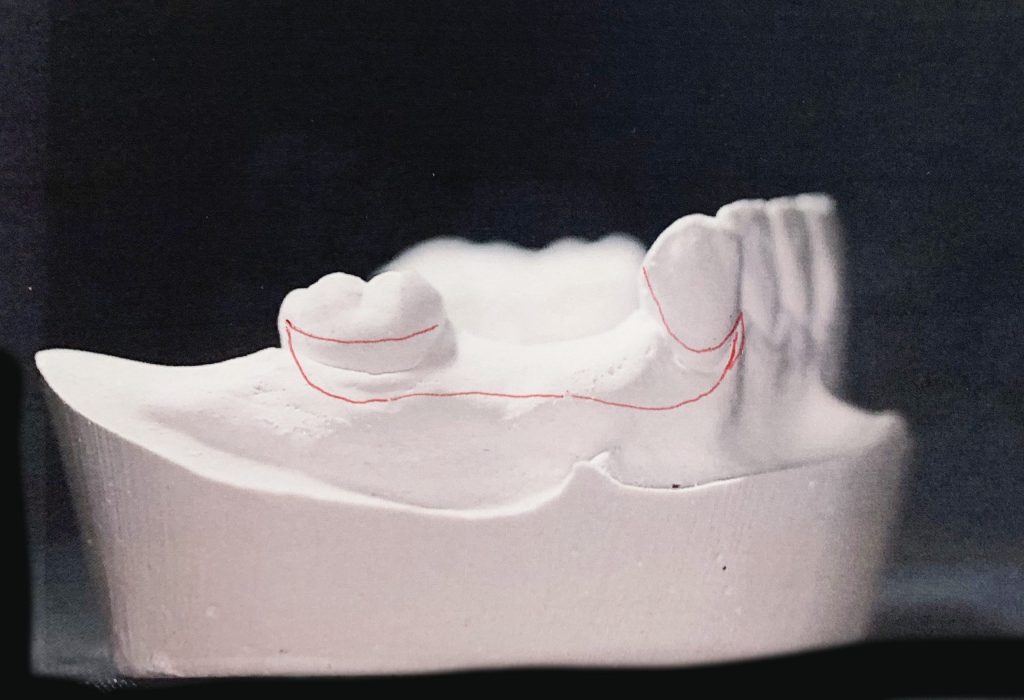
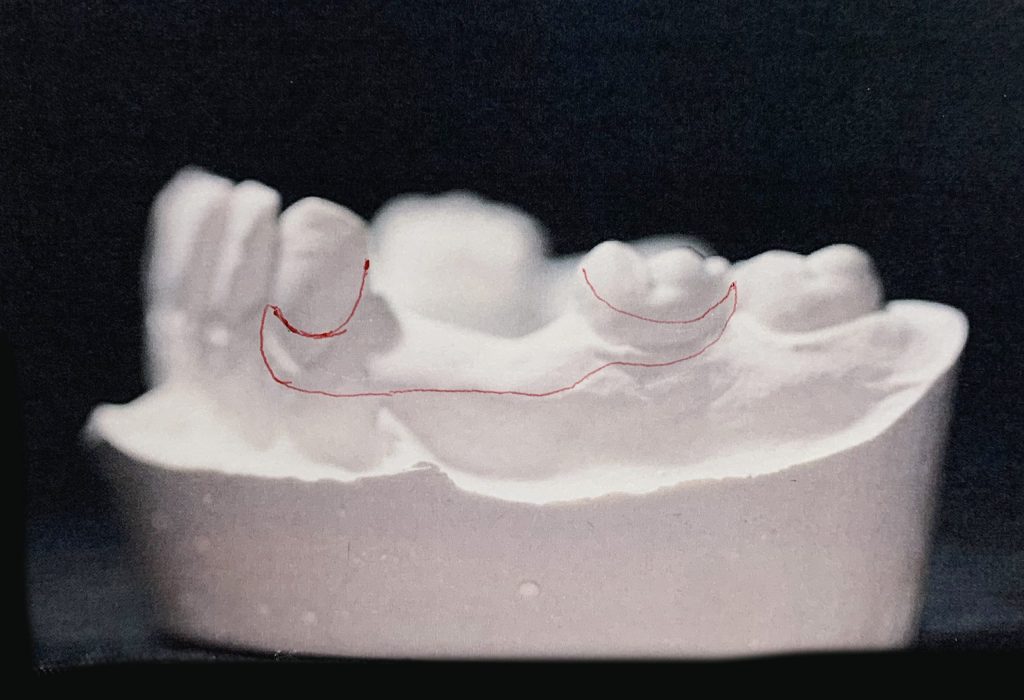
TCS/Metal Combo Partial – There is no real disadvantage for a TCS/Metal combo or an acrylic/metal case. The decision will be at the doctor’s discretion.
- Acrylic/Metal clasp design marked in black.
- TCS/Metal combo clasp design marked in red.
